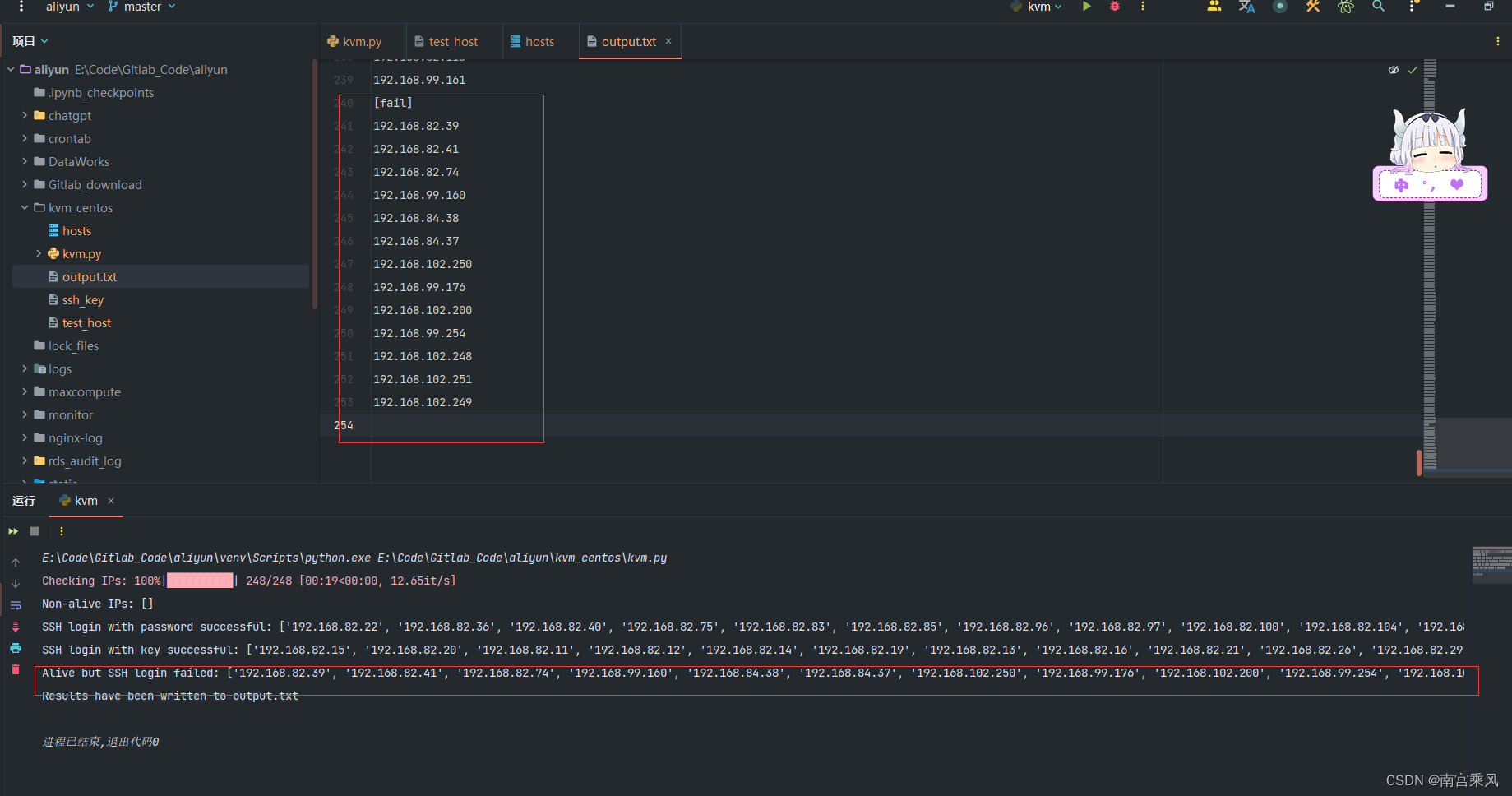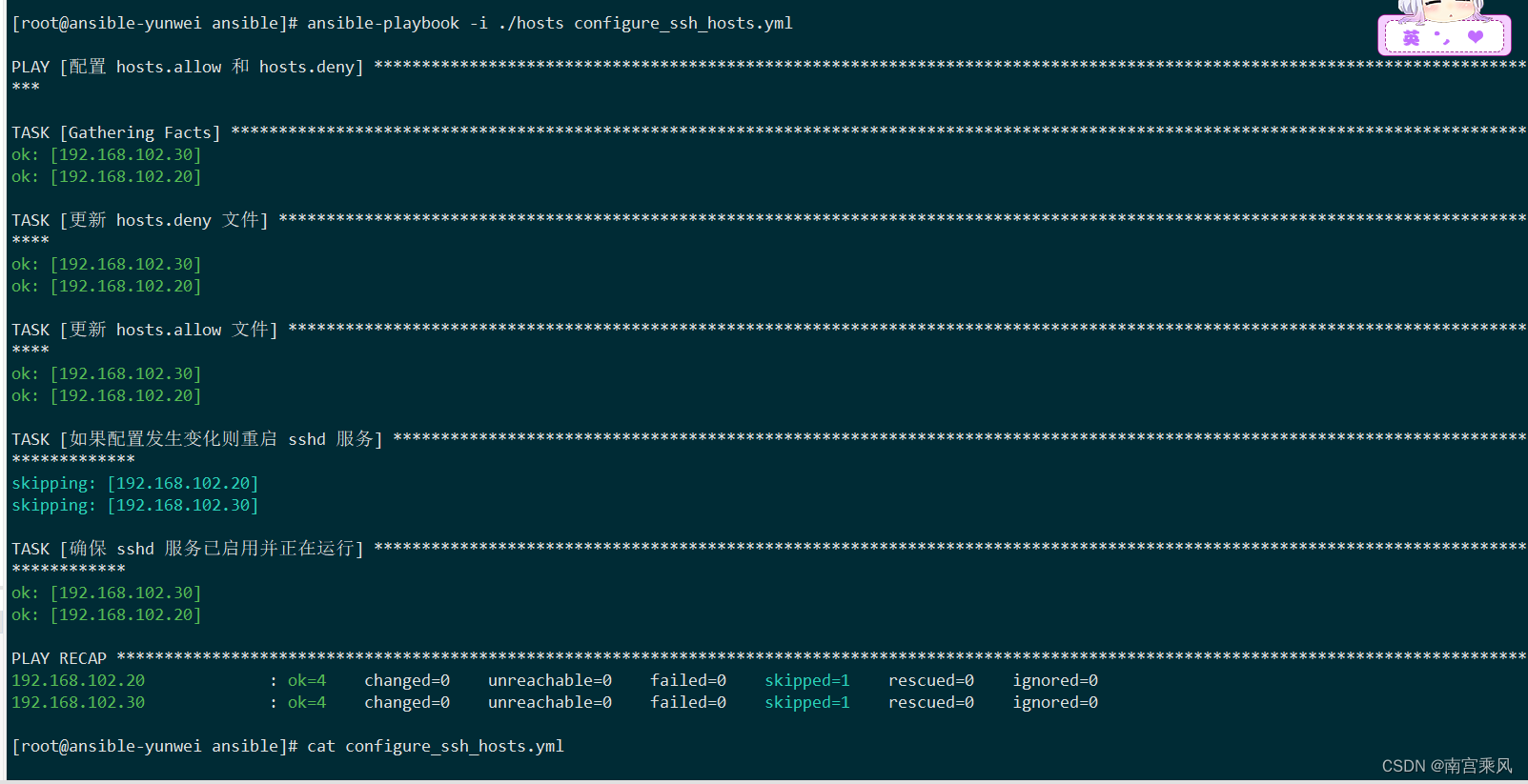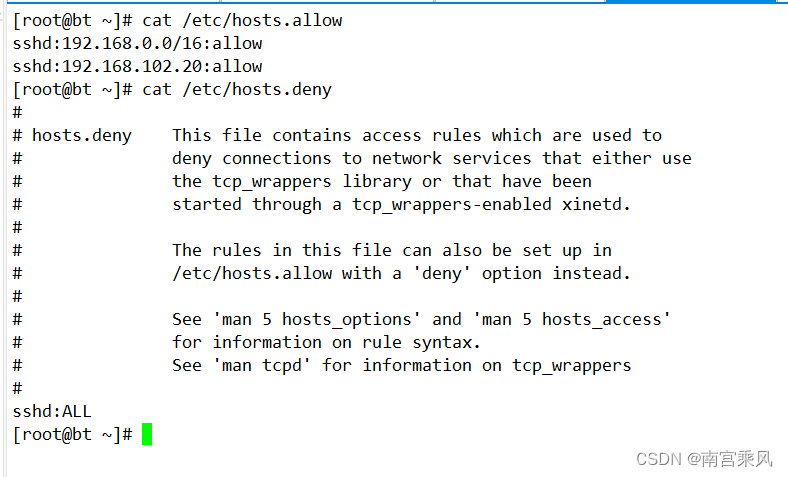1、简介
在现代 IT 基础设施中,管理大量服务器是一项复杂而繁琐的任务。特别是在检查服务器的存活状态以及 SSH 登录等任务上,手动操作非常耗时且容易出错。本文将介绍如何使用 Python 脚本实现对多台服务器的批量检查和管理,包括检查服务器是否在线,以及通过密码或 SSH 密钥登录服务器。
2、背景
在我们测试机房环境,为了方便管理和使用。需要统一 账号,登录方式,以及堡垒机安全验证。在之前架构基础上,我们需要梳理整合现有所有测试机器。 需要批量管理和监控多台服务器。例如,检查服务器是否存活、是否可以通过 SSH 登录等。手动执行这些任务效率低且容易出错。通过编写自动化脚本,可以大大提高工作效率和准确性。
3、环境介绍
1、依赖库
- paramiko:用于 SSH 登录。
- tqdm:用于显示进度条。
- concurrent.futures:用于多线程处理。
可以通过以下命令安装这些库:
|
|
2、文件结构
hosts:包含服务器 IP 地址的文件,每行一个 IP 地址。ssh_key:SSH 私钥文件路径。script.py:主脚本文件。
4、Python实现步骤
方便统计使用,归档文件 后期整理维护
第一步:读取 IP 地址
首先,我们需要读取 hosts 文件中的 IP 地址。每行一个 IP 地址。
|
|
第二步:检查 IP 是否存活
我们使用 ping 命令检查每个 IP 是否存活。通过 subprocess 模块执行 ping 命令,并检查返回码来判断 IP 是否存活。
|
|
第三步:尝试 SSH 登录
我们使用 paramiko 库尝试通过密码和 SSH 密钥登录服务器。为了处理 RSA 格式的密钥,我们使用 paramiko.RSAKey.from_private_key_file 函数。
|
|
第四步:并行处理 IP 地址
为了提高效率,我们使用 concurrent.futures.ThreadPoolExecutor 实现多线程处理。每个线程会检查一个 IP 的存活状态,并尝试通过密码和 SSH 密钥登录。
|
|
第五步:生成结果文件
最后,我们将检查结果写入一个文件中,按照指定的格式记录每个 IP 的状态。
|
|
完整的代码
|
|


5、Ansbile实现步骤
1、上面生成的文件作为hosts使用
|
|
2、给密码登录的添加公钥
|
|
作用:这条命令会提示用户输入 SSH 密码,并将运行 Ansible 以 root 用户身份连接到 all_host 文件中列出的所有主机。然后,它会将当前用户的公钥添加到这些主机上指定用户的 authorized_keys 文件中,以实现无密码 SSH 登录。
-
ansible password -i ./all_host:ansible:Ansible 命令的入口点。password:这里应该是指 Ansible 的 inventory 文件中定义的模块名称-i ./all_host:指定 Ansible inventory 文件的位置,这里是./all_host。
-
-m authorized_key:-m authorized_key:指定要使用的 Ansible 模块,这里是authorized_key模块,用于管理~/.ssh/authorized_keys文件。
-
-a "user={{ ansible_user }} state=present key='{{ lookup('file', '~/.ssh/id_rsa.pub') }}'":-
-a:为指定的模块传递参数。 -
"user={{ ansible_user }} state=present key='{{ lookup('file', '~/.ssh/id_rsa.pub') }}'"user={{ ansible_user }}:指定要在目标主机上操作的用户,这里使用了变量{{ ansible_user }},这个变量通常在 Ansible 的配置文件或命令行中定义。state=present:确保公钥存在,如果不存在就添加。key='{{ lookup('file', '~/.ssh/id_rsa.pub') }}':从本地文件~/.ssh/id_rsa.pub中读取公钥,并将其添加到目标主机的authorized_keys文件中。
-
-
-u root:-u root:以 root 用户身份连接到目标主机。
-
--ask-pass:--ask-pass:提示输入 SSH 密码。这在目标主机还没有配置无密码 SSH 登录时很有用。
6、自动化配置安全
hosts.allow 和 hosts.deny 文件是 TCP Wrappers 的一部分,用于在 Unix 和 Linux 系统上控制对服务的访问。TCP Wrappers 提供了一种通过 IP 地址、主机名或域名限制或允许访问服务的机制。
hosts.allow 和 hosts.deny 文件的作用
hosts.allow:定义允许哪些主机访问哪些服务。hosts.deny:定义拒绝哪些主机访问哪些服务。
这两个文件通常位于 /etc 目录下。
格式
这两个文件的每一行包含一条访问控制规则,格式如下:
|
|
- 服务列表:要控制的服务名称,可以是单个服务名,也可以是多个服务名,以逗号分隔。
- 客户端列表:允许或拒绝访问的客户端,可以是 IP 地址、主机名或域名,也可以是多个客户端,以逗号分隔。
- 选项(可选):可以包含日志记录或执行命令等额外操作。
使用示例
假设你有一台服务器,想控制对 SSH 服务的访问。
hosts.allow
允许特定 IP 地址访问 SSH 服务:
|
|
允许特定子网访问 SSH 服务:
|
|
允许特定主机名访问 SSH 服务:
|
|
hosts.deny
拒绝所有其他主机访问 SSH 服务:
|
|
使用场景
- 安全控制:通过限制对某些关键服务(如 SSH、FTP、SMTP 等)的访问,可以增强系统的安全性。
- 访问管理:在多用户环境中,可以根据需求灵活控制哪些用户或主机能够访问特定服务。
- 日志记录:结合日志选项,可以记录访问尝试,以便审计和监控。
示例需求
-
在
/etc/hosts.deny中写入sshd:ALL,拒绝所有主机的 SSH 访问。 -
在
/etc/hosts.allow中允许特定 IP 地址段和单个 IP 地址的 SSH 访问:sshd:192.168.0.0/16:allowsshd:192.168.102.20:allow
-
如果文件有变动,则重启
sshd服务。
Ansible 剧本
编写一个 Ansible 剧本来自动执行上述操作。以下是完整的 Ansible 剧本代码:configure_ssh_hosts.yml
|
|
使用方式
定义剧本名称和目标主机:
|
|
|
|


注意事项
hosts.allow文件中的规则优先于hosts.deny中的规则。如果一个主机被hosts.allow允许,则不会被hosts.deny拒绝。- 确保规则的顺序和逻辑正确,以免意外拒绝合法访问或允许非法访问。
- 这些文件适用于支持 TCP Wrappers 的服务,不适用于所有服务。
通过合理配置 hosts.allow 和 hosts.deny 文件,可以有效控制服务访问,提高系统的安全性。
